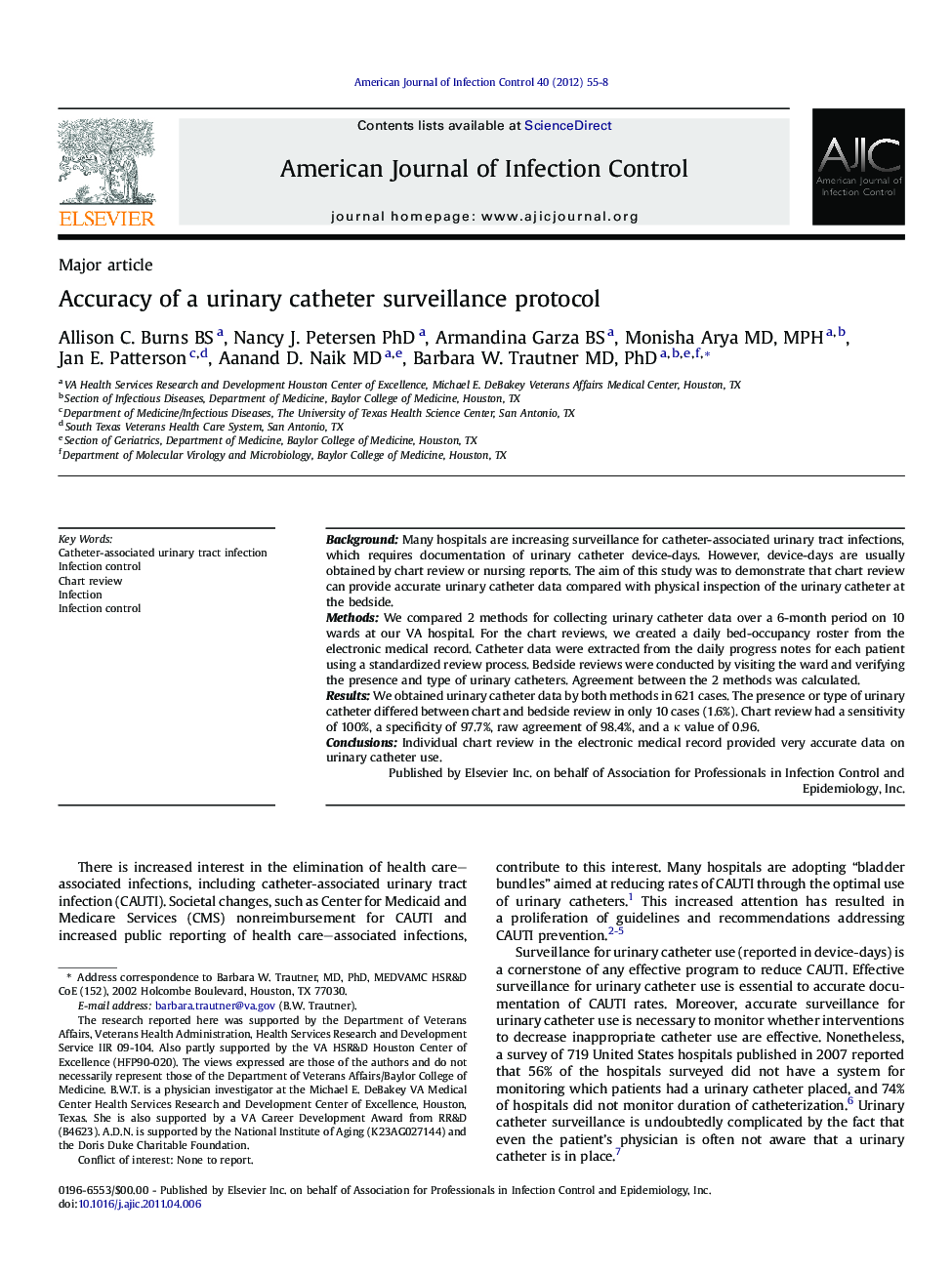| Article ID | Journal | Published Year | Pages | File Type |
|---|---|---|---|---|
| 2638154 | American Journal of Infection Control | 2012 | 4 Pages |
BackgroundMany hospitals are increasing surveillance for catheter-associated urinary tract infections, which requires documentation of urinary catheter device-days. However, device-days are usually obtained by chart review or nursing reports. The aim of this study was to demonstrate that chart review can provide accurate urinary catheter data compared with physical inspection of the urinary catheter at the bedside.MethodsWe compared 2 methods for collecting urinary catheter data over a 6-month period on 10 wards at our VA hospital. For the chart reviews, we created a daily bed-occupancy roster from the electronic medical record. Catheter data were extracted from the daily progress notes for each patient using a standardized review process. Bedside reviews were conducted by visiting the ward and verifying the presence and type of urinary catheters. Agreement between the 2 methods was calculated.ResultsWe obtained urinary catheter data by both methods in 621 cases. The presence or type of urinary catheter differed between chart and bedside review in only 10 cases (1.6%). Chart review had a sensitivity of 100%, a specificity of 97.7%, raw agreement of 98.4%, and a κ value of 0.96.ConclusionsIndividual chart review in the electronic medical record provided very accurate data on urinary catheter use.
